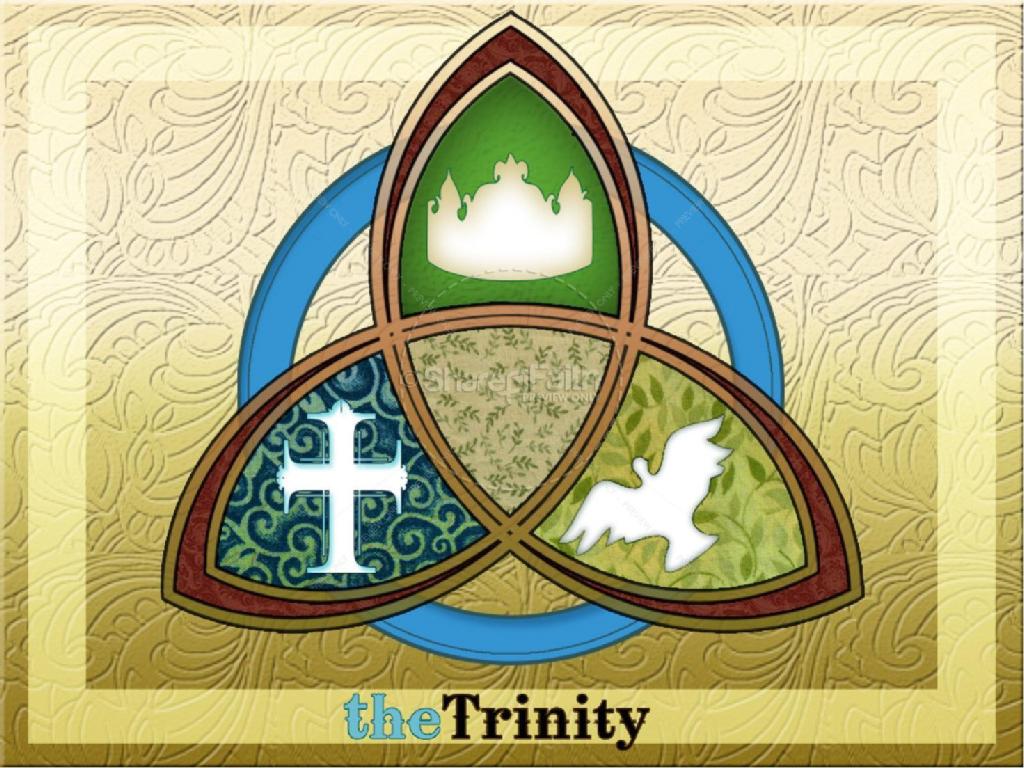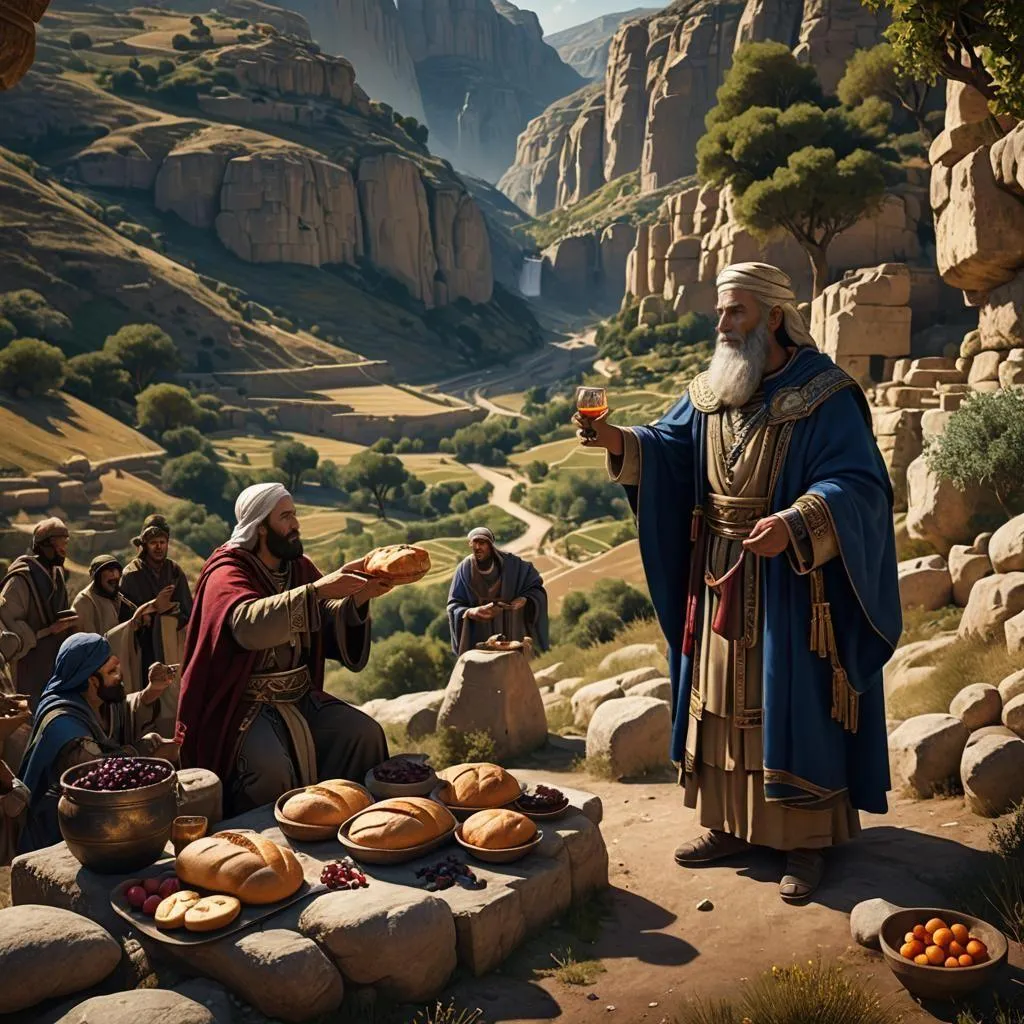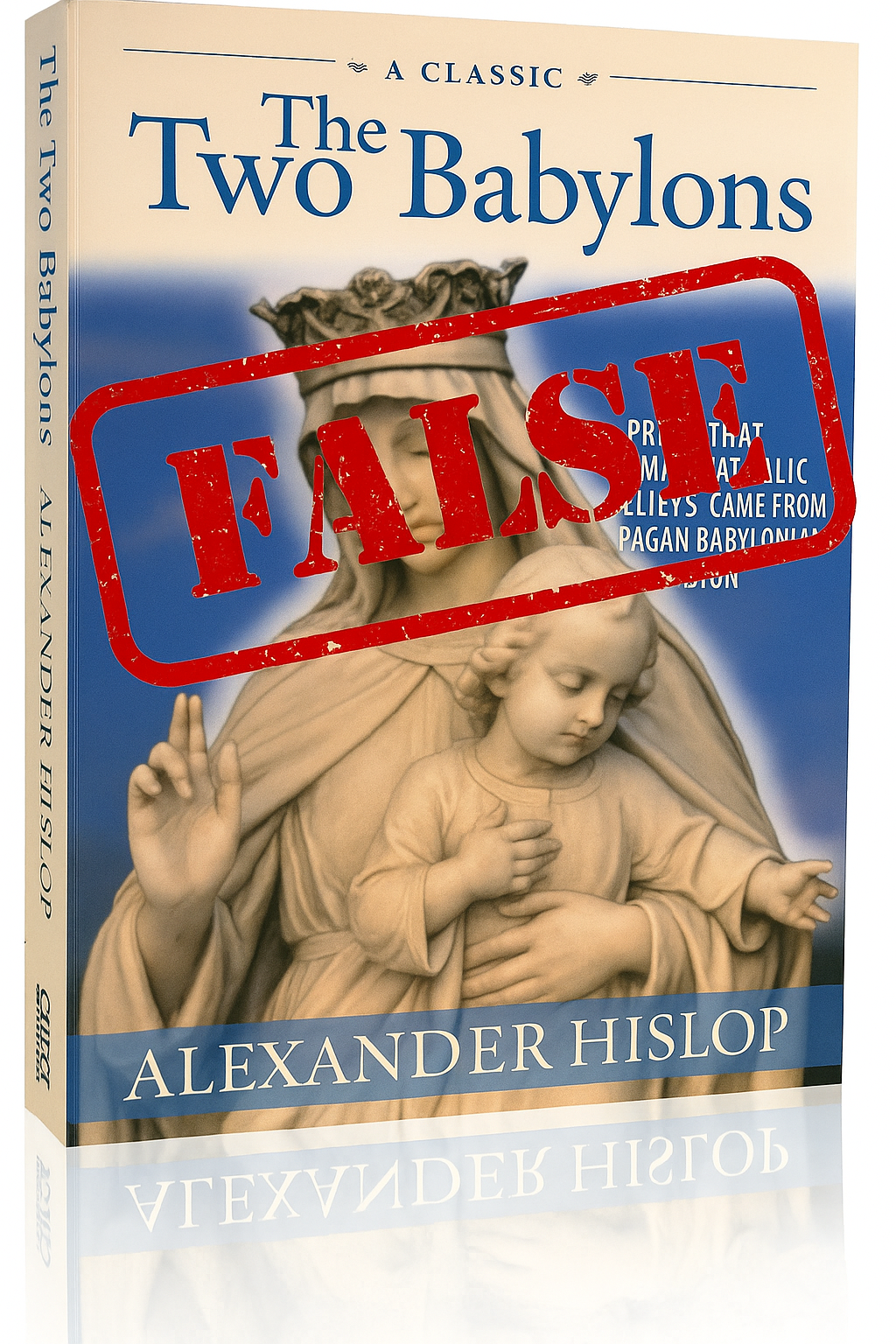The Coming Kingdom of the Son of Man
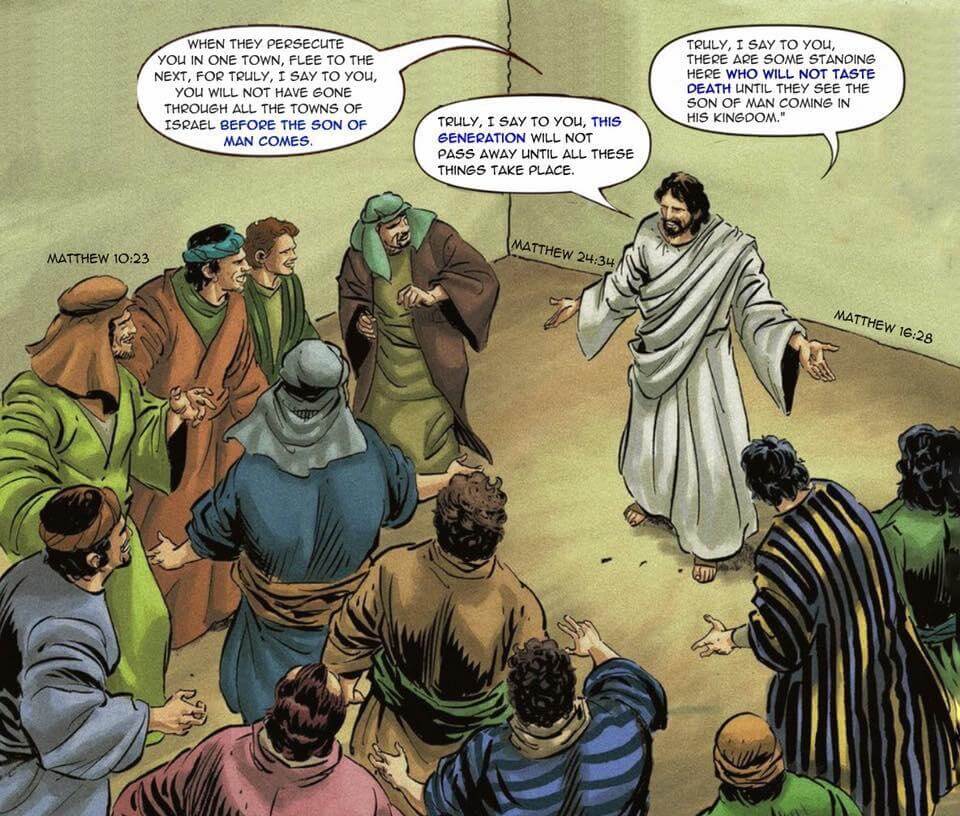
The importance of context of what's being said, and to whom, in Scripture.
I came across this image the other day (in the header above; see larger here) that links together three parts of Matthew’s Gospel to highlight the connection which many often miss, or read as separate events. I like the image because it shows that when Jesus spoke these things, he would have been saying them directly to the disciples and others who were listening to his teaching, and not in some cryptic, ambiguous dictation to a prophetic scribe, devoid of all context and meaning to those around him at the time.
Update Feb 2017: I am adding some additional information to this to display some of the counter arguments/alternative interpretations used by dispensationalists, sometimes also called “Futurists” (those who believe these passages refer to a distant future event centred around the “Second Coming” of Jesus, and is typically the most popular and recent interpretive framework taught in churches today) to try and give a more well rounded view and a defense of the non-dispensational interpretation.
So let's break it down and look at each quote in a bit more detail to see how these all connect together coherently.
Matt 10:23
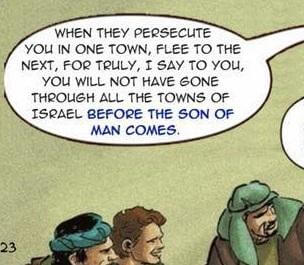
Matthew 10 is Jesus telling his disciples about their mission and the persecutions it would entail. He explains to them all the things that would happen to them – "they will hand you over to councils and flog you in their synagogues; and you will be dragged before governors and kings because of me" (Matt 10:17), which we can see fulfilled in Acts (cf. Acts 8:1; Acts 11:19; Acts 13:50; Acts 14:22; Acts 20:23).
Jesus rounds this short discussion off by telling them to flee from one town to the next and that they "will not have gone through all the towns of Israel before the Son of Man comes." (Matt 10:23), which gives us a time statement and some parameters about the coming of the Son of Man.
On the face of it, this sounds like any other eschatological statement by Jesus in regards to his “coming” at the end of the age, which he mentions a few times using this same or similar terminology (see: Matt 24:27; 25:31; Mark 8:38; Luke 9:26; 18:8). But the Futurist interpretation would say that this isn’t what Jesus refers to at all, but rather is a convoluted way of him saying “you won’t have travelled far until I catch up with you later” – ie. until Jesus (the Son of Man) comes [back to the apostles]. That conclusion is quite a stretch of the imagination and, like the other dispensationalist interpretation which says that this refers to some far future event, it completely rips it from its direct and immediate context: a message to the apostles.
But, as many commentaries point out, the Futurist interpretation was not the common view until recent times, nor the historical position of the Church for millennia. As the Benson commentary (amongst others) puts it:
...until the Son of man shall come — To destroy their capital city, temple, and nation. The destruction of Jerusalem by Titus is often called the coming of the Son of man. See Matthew 24:27; Matthew 24:37; Matthew 24:39; Matthew 24:44; Luke 18:5.
"The son of man comes" or the "coming of the son of man" is a phrase only used in one particular way all the way throughout the Gospels: to mean the judgement of God on a nation. This is seen in many places in the Old Testament, often called the Day of the Lord. The same is true here, Jesus is once again teaching about the impending doom of Jerusalem as punishment. Hence the urgency towards his disciples to flee towns that won't listen and go to where they do accept the Gospel.
Matthew 24:34
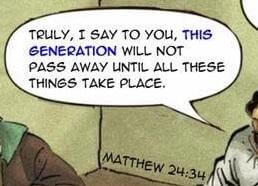
Matthew 24 is a similar conversation, but with some more details.
Whilst walking by the temple, the disciples point out the magnificence of the building, and Jesus responds by saying "Truly I tell you, not one stone will be left here upon another; all will be thrown down." (v.2)
So obviously, the disciples ask the poignant question: "Tell us, when will this be, and what will be the sign of your coming and of the end of the age?" (v.3) – notice here that they also link the tearing down of the temple with the “end of the age”.
To which Jesus begins his long monologue on what is going to happen, the destruction of the temple and of Jerusalem, and the signs leading up to this event for his followers to watch out for. Again, he tells them of the impending persecutions that will befall them because of this ("Then they will hand you over to be tortured and will put you to death").
The parallel account in Luke 21 words this persecution almost word-for-word with Matt 10:23 –
"But before all this [the signs and destruction] occurs, they will arrest you and persecute you; they will hand you over to synagogues and prisons, and you will be brought before kings and governors because of my name."
Luke 21:12
Now, Jesus goes further with his explanation and shows how this ties in with Daniel's prophecy (Daniel 9:20-27), which his Jewish audience would have understood. Matthew's Gospel was written to a Jewish community, and so keeps this language:
"So when you see the desolating sacrilege standing in the holy place, as was spoken of by the prophet Daniel (let the reader understand), then those in Judea must flee to the mountains..." (Matt 24:15)
Whereas Luke's Gospel was written by a Gentile, to Gentiles, and thus clarifies certain things so that non-Jews will understand, such as what that the “desolating sacrilege” is:
"When you see Jerusalem surrounded by armies, then know that its desolation has come near. Then those in Judea must flee to the mountains..."
Luke 21:20
Jesus then rounds up with more apocalyptic imagery from Daniel's prophecy which speaks of the Son of Man coming on clouds – a direct quote of Dan 7:14;
"Then the sign of the Son of Man will appear in heaven, and then all the tribes of the earth will mourn, and they will see ‘the Son of Man coming on the clouds of heaven’ with power and great glory. "
Matt 24:30
If we also look at when Jesus was before the Council being accused in his trial, the High Priest asks Jesus directly if he is the Messiah, to which he says "I am" and then quotes Dan 7:14 to prove his point and tells them what they will soon see (Matt 26:57-68).
Towards the end of this chapter, Jesus uses a fig tree to emphasise the need to be watchful for the signs he already explained, and then concludes by saying "this generation will not pass away until all these things have taken place" (Matt 24:34), once again giving a pretty solid time frame for when those listening should expect to see these things come to pass.
But despite all of this, the Futurist will argue that when Jesus said “this generation”, he actually meant “that future generation who live to see these signs” which completely strips this of any context and meaning to those people he spoke to. There are some Dispensationalist teachers who say that the Greek word for “generation” should be translated as “race”, changing the meaning to say “this race shall not pass away” despite all other instances of the word “generation” meaning just that: a generation. You can read a more detailed counter-argument to this “race” claim, and all the implications of it, here: americanvision.org/1689/norman-l-geisler-generation/.
Jesus talks about judgement coming on "this generation" more than just here in Matt 24 where the context and grammar is the same (Matt 12:41-45; 23:36; Mark 8:36; Luke 11:50 to name a few). This interpretation is just a weak argument which willfully ignores other parts of Scripture or reinterprets words, to force a doctrine (Futurism/Dispensationalism) into the text rather than let Scripture dictate doctrine.
Matthew 16:28
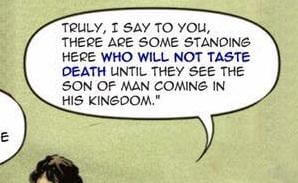
The final quote in the image comes from Matt 16:28 where Jesus rounds off his dialogue foretelling his death and resurrection, and subsequent coming Kingdom. Taken in the context of verse 27, this again harkens back to the prophecy in Daniel 7 about the Son of Man coming into power with his eternal kingdom and the position of judgement he will have over the nations: "For the Son of Man is to come with his angels in the glory of his Father, and then he will repay everyone for what has been done" (v.27).
After saying this, Jesus emphasises the imminence of this event by saying that "there are some standing here who will not taste death before they see the Son of Man coming in his kingdom".
The Futurist argument says that coming kingdom is referring to the transfiguration, and that the suicide of Judas fulfils Jesus’ words about some of those with him not “tasting death” before they see the kingdom come. On the face of it, this sounds like a fair counterpoint, until you consider the situation and see that there are a couple of reasons why this doesn’t make sense.
The first reason being the most striking, is that after Jesus spoke these words, the transfiguration happened only six days later and we know this because Scripture gives us the time in Matt 17:1 (and Mark 9:2). That makes Jesus’ statement about some people not dying before seeing the kingdom a little bit over-dramatic if it was only less than a week away! The second point being that Jesus only took Peter, James and John with him, so Judas wasn’t even there to witness the transfiguration before his death — not to mention that he wouldn’t have even known about it since Jesus swore the three disciples to silence until after the resurrection (Matt 17:9).
Still, there are some Bible teachers who would use a "slice and dice" Futurist hermeneutic. What I mean by this is that sometimes certain scholars will "slice" up a passage of Scripture, in arbitrary places like mid-sentence, to make it fit a particular theological interpretation (the same thing is often done with parts of Matt 24). For example, some would say verses 27 and 28 are not dealing with the same subject, and that verse 27 is about the end of time but suddenly verse 28 is about the transfiguration!
But we can see from examples like John 21:20-23 that Jesus' followers believed that some of them would not die before his coming, as we can see Peter trying to quiz Jesus on whether one of them would die or not before then (thus starting a rumour among the disciples that John wouldn't die!).
This outlook and expectation can be seen throughout the New Testament, with so many references to these things happening "soon" or in a "very little while" (Heb 10:37), or it being the "last hour" (1 John 2:18) and what "must soon take place" (Rev 1:1), plus many more similar phrases.
To Summarise
Each of these quotes are different conversations and various times of teaching by Jesus to his disciples, and whoever else was around at the time, which all talk about the same event: the coming of the Kingdom of the Son of Man, and the signs and things to look out for in the lead up to said event. Namely, the destruction of Jerusalem being the obvious and most catastrophic event which his followers would notice, which God was bringing as a judgement against the nation of Israel like he did in former times, and the establishment of the Church in power!
This is just a brief look at this topic and the few passages surrounding it, but if it’s sparked your interest, then you can read more about this by following through my seven part study on the “Second Coming of Jesus”.
Further Reading:
- Benson Commentary: http://biblehub.com/commentaries/benson/matthew/10.htm
-
Various Commentaries: http://biblehub.com/commentaries/matthew/10-23.htm
-
Jackson, Wayne. "What Is the Meaning of Matthew 10:23?" ChristianCourier.com. Access date: January 29, 2017. https://www.christiancourier.com/articles/668-what-is-the-meaning-of-matthew-10-23
-
Norman Geisler: “This Generation” or “This Race” Will Not Pass Away? http://americanvision.org/1689/norman-l-geisler-generation/
- List of 101 time indicators throughout the NT: http://www.preteristarchive.com/Hyper/2002_green_time-indicators.html
- http://www.theopedia.com/dispensationalism
- http://www.theopedia.com/preterism
- https://thesacredfaith.co.uk/home/perma/1401098149/article/the-coming-of-jesus-intro.html
Leave a comment Like Back to Top Seen 1.7K times Liked 2 times
Enjoying this content?
Support my work by becoming a patron on Patreon!
By joining, you help fund the time, research, and effort that goes into creating this content — and you’ll also get access to exclusive perks and updates.
Even a small amount per month makes a real difference. Thank you for your support!
Subscribe to Updates
If you enjoyed this, why not subscribe to free email updates and join over 853 subscribers today!
My new book is out now! Order today wherever you get books
Recent Posts
Luke J. Wilson | 20th May 2025 | Islam
You are not alone. Around the world, many Muslims — people who already believe in one God, pray, and seek to live righteously — are drawn to know more about Jesus (ʿĪsā in Arabic). Some have heard He is more than a prophet. Some have sensed His presence in a dream or vision. And some simply long to know God more deeply, personally, and truly. So what does it mean to become a Christian? And how can you take that step? This guide is for you. 1. What Christians Believe About God and Jesus ➤ One God, Eternal and Good Christians believe in one God — the same Creator known to Abraham, Moses, and the prophets. But we also believe God is more personal and relational than many realise. In His love, He has revealed Himself as Father, Son (Jesus), and Holy Spirit — not three gods, but one God in three persons. ➤ Jesus Is More Than a Prophet Muslims honour Jesus as a great prophet, born of the virgin Mary. Christians also affirm this — but go further. The Bible teaches that Jesus is the Word of God (Kalimat Allāh), who became flesh to live among us. He performed miracles, healed the sick, raised the dead — and lived without sin.Jesus came not just to teach but to save — to bring us back to God by bearing our sins and rising again in victory over death. 2. Why Do We Need Saving? ➤ The Problem: Sin All people — no matter their religion — struggle with sin. We lie, get angry, feel jealous, act selfishly, or fail to love God fully. The Bible says: “All have sinned and fall short of the glory of God.” (Romans 3:23) Sin separates us from God. And no matter how many good deeds we do, we can never make ourselves perfect or holy before Him. ➤ The Solution: Jesus Because God loves us, He did not leave us in our sin. He sent Jesus, His eternal Word, to live as one of us. Jesus died willingly, offering His life as a sacrifice for our sins, then rose again on the third day. “But God proves his love for us in that while we still were sinners Christ died for us.” (Romans 5:8) 3. How Do I Become a Christian? Becoming a Christian is not about joining a Western religion. It’s about entering a relationship with God through faith in Jesus Christ. Here is what the Bible says: ✝️ 1. Believe in Jesus Believe that Jesus is the Son of God, that He died for your sins, and that He rose again. “If you confess with your lips that Jesus is Lord and believe in your heart that God raised him from the dead, you will be saved.” (Romans 10:9) 💔 2. Repent of Your Sins Turn away from sin and ask God to forgive you. This is called repentance. It means being truly sorry and choosing a new way. “Repent therefore, and turn to God so that your sins may be wiped out.” (Acts 3:19) 💧 3. Be Baptised Jesus commands His followers to be baptised in water as a sign of their new life. Baptism represents washing away your old life and rising into a new one with Jesus. “Repent and be baptised every one of you in the name of Jesus Christ so that your sins may be forgiven.” (Acts 2:38) 🕊️ 4. Receive the Holy Spirit When you believe in Jesus, God gives you the Holy Spirit to live within you, guiding you, comforting you, and helping you follow His will. “You received the Spirit of adoption, by whom we cry, ‘Abba! Father!’” (Romans 8:15) 🧎 5. Begin a New Life As a Christian, you are born again — spiritually renewed. You begin to grow in faith, love, and holiness. You read the Bible, pray, fast, and gather with other believers. Your life is no longer your own; you now live for God. 4. What Does a Christian Life Look Like? Jesus said: “If anyone wants to become my followers, let them deny themselves and take up their cross and follow me.” (Matthew 16:24) This means: Loving God with all your heart Loving your neighbour — even your enemies Forgiving others ...
Luke J. Wilson | 05th May 2025 | Politics
When we think about David and Saul, we often focus on David’s rise to kingship or his battle with Goliath. But hidden within that story is a deep lesson for today’s generation about leadership, resistance, and the power of revolutionary love. At a recent youth training event (thanks to South West Youth Ministries), I was asked how I would present the story of David and Saul to a Christian teenage youth group. My mind turned to the politics of their relationship, and how David accepted Saul’s leadership, even when Saul had gone badly astray. David recognised that Saul was still God’s anointed king — placed there by God Himself — and that it was not David’s place to violently remove him. Gen-Z are more politically aware and engaged than previous generations, and are growing up in a world where politics, leadership, and social issues seem impossible to escape. We live in a world where political leaders — whether Trump, Putin, Starmer, or others — are often seen as examples of failed leadership. It’s easy to slip into bitterness, cynicism, or violent rhetoric. These kids are immersed in a culture of activism and outrage. As Christians, we’re called to care deeply about truth and justice and approach leadership differently from the world around us (Hosea 6:6; Isaiah 1:17; Micah 6:8). The story of David and Saul offers pertinent lessons for our modern lives. Respect Without Endorsement David’s respect for Saul was not blind loyalty. He did not agree with Saul’s actions, nor did he ignore Saul’s evil. David fled from Saul’s violence; he challenged Saul’s paranoia; he even cut the corner of Saul’s robe to prove he had the chance to kill him but chose not to. Yet throughout, David refused to take matters into his own hands by force. Why? Because David understood that even flawed authority ultimately rested in God’s hands, he trusted that God would remove Saul at the right time. This is echoed later in the New Testament when Paul writes in Romans 13 that “there is no authority except from God, and those authorities that exist have been instituted by God”, something even Jesus reminded Pilate of during his trial (John 19:10–11). In other words, even flawed leadership can be part of God’s bigger plan, whether for blessing or discipline. Even when leaders go bad, our call as believers is to maintain integrity, respect the position, and resist evil through righteousness — not rebellion. David and Saul: A Lesson in Respect and Restraint Saul was Israel’s first king — anointed by God but later corrupted by pride, fear, and violence. David, chosen to succeed him, spent years running for his life from Saul’s jealous rage. One day, David found Saul alone and vulnerable in a cave. His men urged him to strike Saul down and end the conflict. But David refused: “I will not raise my hand against my lord; for he is the Lord’s anointed.” (1 Samuel 24:10) Instead of killing Saul, David cut off a piece of his robe to prove he could have harmed him, but didn’t. In doing so, he demonstrated a real form of nonviolent resistance. He stood firm against Saul’s injustice without resorting to injustice himself, and acted in a way that could try to humble Saul instead. Peacemaking Is Not Passivity There is a modern misconception that peacemaking means doing nothing and just letting injustice roll all over us. But true biblical peacemaking is not passive; it actively resists evil without becoming evil. Interestingly, David’s actions toward Saul also foreshadow the type of nonviolent resistance Jesus later taught. When Jesus commanded His followers to turn the other cheek, go the extra mile, and love their enemies, he was not calling for passive submission but offering what scholar Walter Wink describes as a “third way” — a bold, peaceful form of resistance that uses what he calls “moral jiu-jitsu” to expose injustice without resorting to violenc...
Luke J. Wilson | 21st April 2025 | Easter
Over the years, I’ve encountered many Christians who’ve quoted from Alexander Hislop’s The Two Babylons as if it were a solid historical resource. The book claims that the Roman Catholic Church is not truly Christian but rather a continuation of ancient Babylonian religion. It’s self-assured and sweeping, and for many people, it seems to explain everything, from Marian devotion to Lent and Easter, to Christmas, as rooted in paganism. But is it accurate? In short: no, it really isn’t. Hislop’s work is a classic example of 19th-century pseudohistory — a polemical piece, written to prove a point, not to explore any historical truth. Flawed Methods and Wild Claims Hislop argues that most Catholic practices — from the Mass and clerical robes to festivals like Christmas and Easter — were somehow borrowed from Babylonian religion. The problem being that Hislop doesn’t rely on primary sources or credible historical data. Instead, he draws connections based on word similarities (like Easter and Ishtar) or visual resemblances (like Mary and child compared with mother-goddess statues from ancient cultures). But phonetic resemblance isn’t evidence, and neither is visual similarity. For example, if I say “sun” and “son” in English, they may sound alike, but they aren’t the same thing. That’s the level of reasoning at work in much of The Two Babylons. Hislop often lumps together completely different ancient figures — Isis, Semiramis, Ishtar, Aphrodite — as if they were all just variations of the same deity. He then tries to say Mary is just the Christian version of this pagan goddess figure. But there’s no credible evidence for that at all. Mary is understood through the lens of Scripture and Christian theology, not through pagan myth. The earliest depictions of Mary and the Christ-child date back to the second century and do not resemble any of the pagan idols. But, again, the common accusations are based on superficial similarities of a woman nursing a child. That’s going to look the same no matter who or what does that! Oldest depiction of Mary. Dura-Europos Church, Syria, 2nd century What About Lent and Tammuz? One of Hislop’s more popular claims is that Lent comes from a Babylonian mourning ritual for the god Tammuz, mentioned in Ezekiel 8:14. He argues that early Christians borrowed the 40-day mourning period and just rebranded it. But this doesn’t line up with the evidence. Lent developed as a time of fasting and repentance leading up to Easter — especially for new believers preparing for baptism. The number forty comes from Scripture: Jesus’ forty days in the wilderness, Moses’ fast on Sinai, and Elijah’s journey to Horeb. Church Fathers like Irenaeus and Athanasius saw it as a time for self-denial and spiritual renewal — not mourning a pagan god. Yes, there are pagan festivals that involve seasonal death and rebirth stories. But similarity does not mean origin. If that logic held, then even Jesus’ resurrection would be suspect because pagan cultures also told resurrection-like stories. Yet the gospel stands apart — not because of myth but because of history and revelation. Why Hislop’s Work Persists Even though The Two Babylons is poor scholarship, it’s unfortunately had a long shelf life. That’s partly because it appeals to a certain kind of suspicion. If you’re already sceptical about the Catholic Church, Hislop offers an easy explanation: “It’s all pagan!”. But history isn’t ever that simple. And theology — especially the theology handed down through the ages by the faithful— isn’t built on conspiracy and apparent obscure connections, but on Christ and the truth of the Scriptures. Interestingly, even Ralph Woodrow, a minister who once wrote a book defending Hislop’s ideas, later retracted his views after digging deeper into the evidence. He eventually wrote a book called The Babylon Connect...
Darwin to Jesus | 16th April 2025 | Atheism
Guest post by Darwin to Jesus Dostoevsky famously said, “If there is no God, then everything is permitted.” For years, as an atheist, I couldn’t understand what he meant, but now I do… Here’s a simple analogy that shows why only theism can make sense of morality: Imagine you just got hired at a company. You show up, set up your desk, and decide to use two large monitors. No big deal, right? But then some random guy walks up to you and says: “Hey, you’re not allowed to do that.” You ask, “What do you mean?” They say, “You’re not permitted* to use monitors that big.” In this situation, the correct response would be: “Says who?” We’ll now explore the different kinds of answers you might hear — each one representing a popular moral theory without God — and why none of them actually work. Subjective Morality The random guy says, “Well, I personally just happen to not like big monitors. I find them annoying.” Notice that’s not a reason for you to change your setup. Their personal preferences don’t impose obligations on you. This is what subjective morality looks like. It reduces morality to private taste. If this were the answer, you’d be correct to ignore this person and get back to work — big monitors are still permitted. Cultural Relativism Instead, they say, “It’s not just me — most people here don’t use big monitors. It’s not our culture.” That’s cultural relativism: right and wrong are just social customs, what is normal behavior. But notice customs aren’t obligations. If the culture were different, the moral rule would be different, which means it isn’t really moral at all. You might not fit in. You might not be liked. But you’re still permitted to use big monitors. Emotivism Here after being asked “says who?” the person just blurts out, “Boo, big monitors!” You reply, “Hurrah, big monitors!” That’s the entire conversation. This is emotivism. On this moral theory when we talk about right and wrong we’re actually just expressing our personal feelings towards actions, I boo rape, you hurrah rape. But shouting “boo!” at someone doesn’t create real obligations. You’re still permitted to use large monitors. Utilitarianism Here, the person says, “Your big monitors lower the overall productivity of the office. You’re not permitted to use them because they lead to worse consequences.” This is utilitarianism: morality is based on producing the greatest happiness for the greatest number. But even if that’s true — so what? Who says you’re obligated to maximize group productivity? And what if your monitors actually help you work better? Utilitarianism might tell you what leads to better outcomes, but it doesn’t tell you why you’re morally obligated to follow that path — especially if it comes at your own expense. You’re still permitted to use large monitors. Virtue Ethics Here they say, “Using big monitors just doesn’t reflect the virtues we admire here — simplicity, humility, restraint.” This is virtue ethics. Morality is about becoming the right kind of person. But who defines those virtues? And why are you obligated to follow them? What if your idea of a virtuous worker includes productivity and confidence? Without a transcendent standard, virtues are just cultural preferences dressed up in moral language. If you don’t care about virtue or their arbitrary standards, then you have no obligation. You’re still permitted to use large monitors. Atheist Moral Realism But what if they say, “Listen, there’s a rule. It’s always been here. It says you can’t use monitors that large.” You ask, “Who made the rule?” They say, “No one.” You ask, “Who owns this company?” They say, “No one owns it. The company just exists.” You look around and ask, “Where is the rule?” They say, “You won’t find it w...








